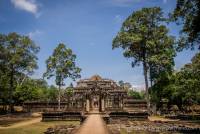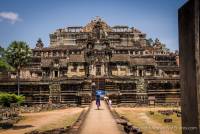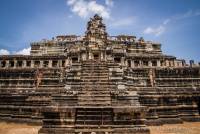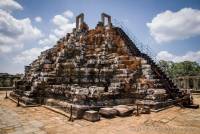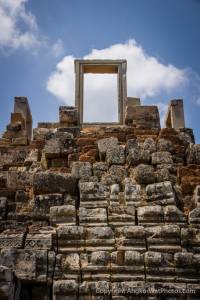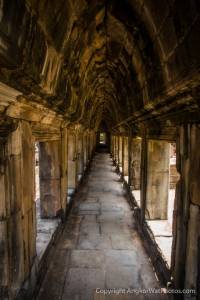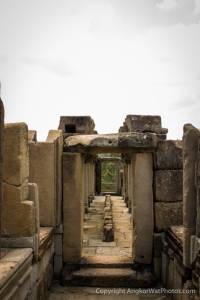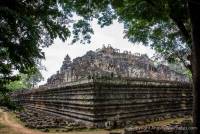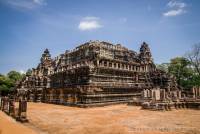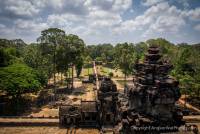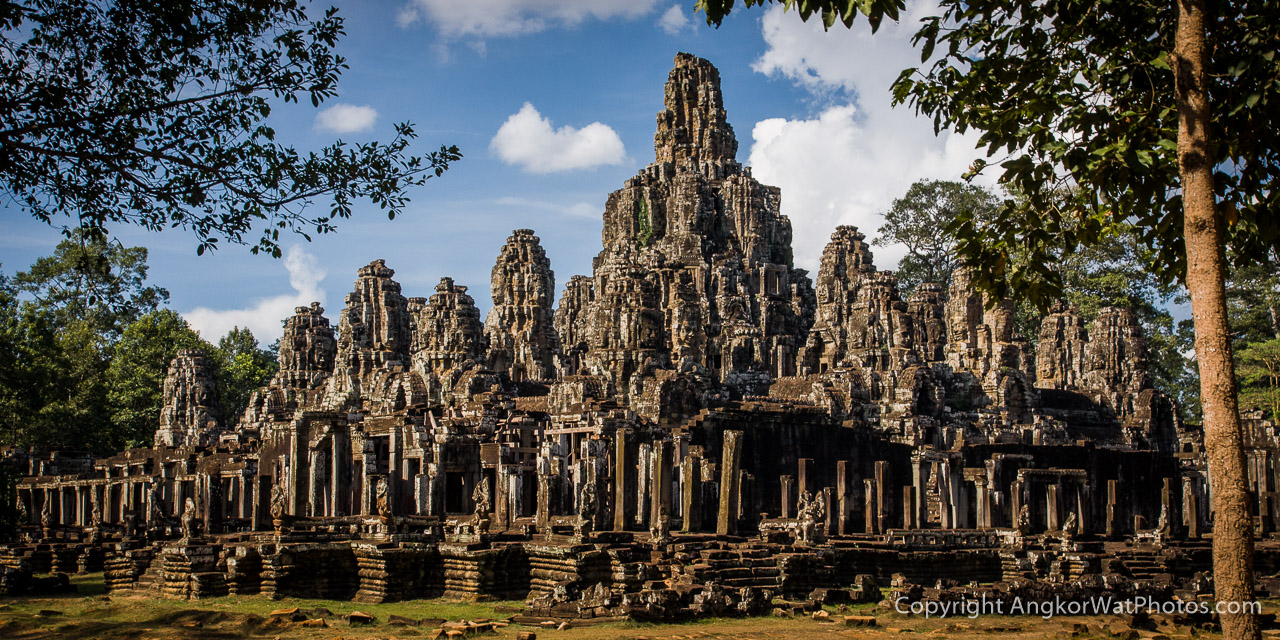Baphuon temple is a Khmer temple in Angkor Thom north-west of Bayon temple. It was built in the 11th century as the state temple of Udayadityavarman II and is dedicated to Hindu God Shiva.
Temples design represents archetype for all other temples built upon the same Baphuon style. It covers area of 120 meters by 100 meters and is 34 meters high – this is without its tower taken into account. With the tower it would have been some 50 meters high.
In late 15th century Baphuon temple was converted to Buddhist temple. They have added a 9 meter tall and 70 meter long reclining Buddha. This statue is believed to be the reason behind the destruction of the missing tower.
Because the Baphuon temple was built on land filled with sand it was unstable and collapsing throughout its history. In the 20th century much of the temple already collapsed and in the 60s there were first efforts at its restoration. Unfortunately those efforts came to an abrupt stop with the reign of Khmer Rouge. Unfortunately all known records of positions of the stones and construction plans of the building got lost during their reign.
A new stab at restoration began in 1995 by a team of French-led archeologists which led to partial reopening of the temple to visitors in 2010. In April 2011, after 51 years, the archaeologists finished the restoration of the temple.
